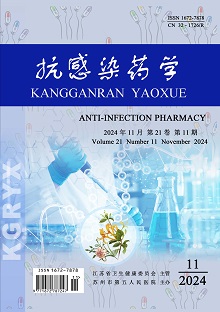SUN Gui-ying, NI Xiao-yan, LI Ying, XU Su
Objective: To analyze the diagnosis and treatment process of one patient with orbital cellulitis and bloodstream infection caused by Streptococcus constellatus, and provide a reference for the clinical diagnosis and treatment of similar patients. Methods and Results: The patient (male, 60 years old) was admitted to the hospital due to "redness and swelling of the right eye for 10 days with suppuration for 1 week". After admission, the physical examination showed that the patient's right eye was severely swollen, with a lot of yellow-white purulent secretions; the laboratory test results of serum showed that the infection indicators such as white blood cell count, neutrophil percentage, C-reactive protein, procalcitonin, etc. were slightly high. Considering that the pathogens of eye infection were mostly Gram-positive bacteria and the combined intracranial infection could not be ruled out, linezolid + piperacillin-tazobactam sodium was given empirically, supplemented with debridement and drainage; on the next day, the blood culture result showed the presence of Streptococcus constellatus; on the third day, Streptococcus constellatus was also detected in the purulent secretion specimens, and the drug susceptibility test results showed that it was sensitive to penicillin, erythromycin, clindamycin, levofloxacin, and ceftizoxime. In combination with the patient's poor blood glucose control, poor oral hygiene, and presence of chronic sinusitis, among other conditions, Streptococcus constellatus was considered to be the pathogen of this infection, and the possibility of methicillin-resistant Staphylococcus aureus infection was ruled out, so linezolid was discontinued; but piperacillin-tazobactam sodium continued to be used for its good antibacterial effect. After 13 days of anti-infection treatment, the patient's symptoms such as redness and swelling, and suppuration of right eye and the infection indicators were significantly improved. Conclusion: As a common bacterium on the body surface and in the oral and nasal cavities, Streptococcus constellatus rarely causes infection in normal people, but has significantly increased risk of infection in people with poor basic conditions. Therefore, it is necessary to identify the pathogens clinically, so as to provide guidance for targeted anti-infection treatment.
